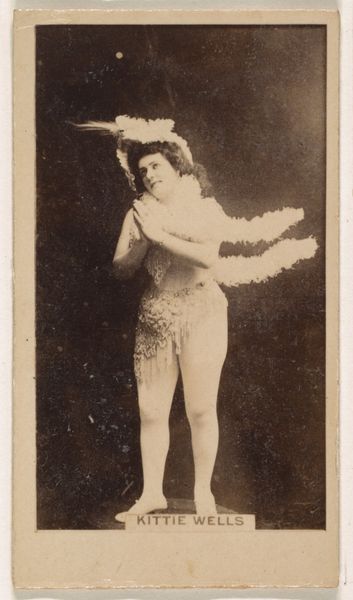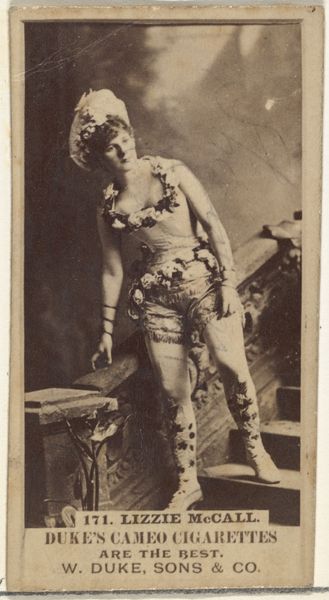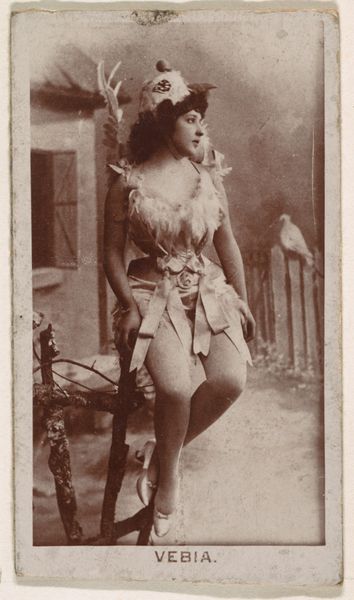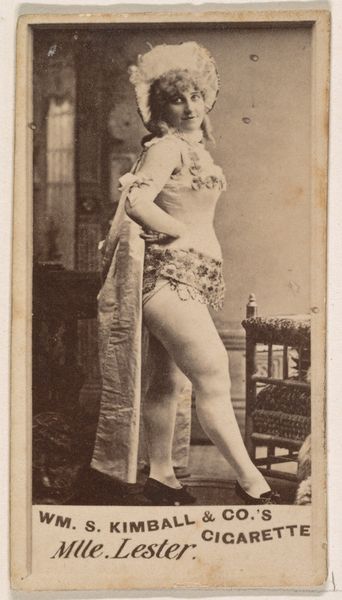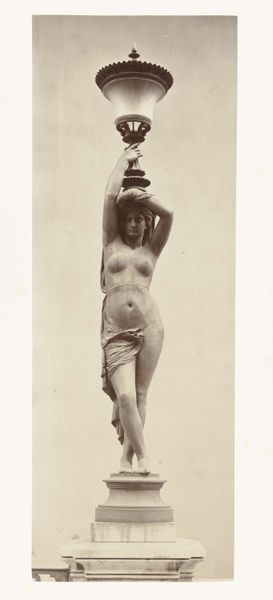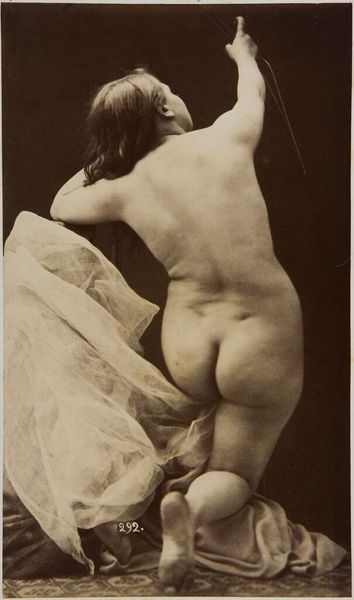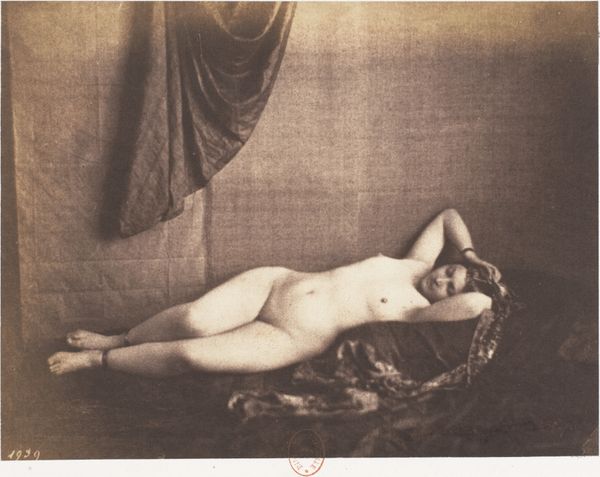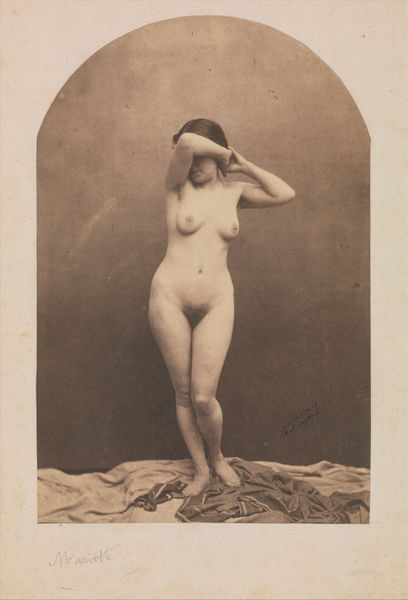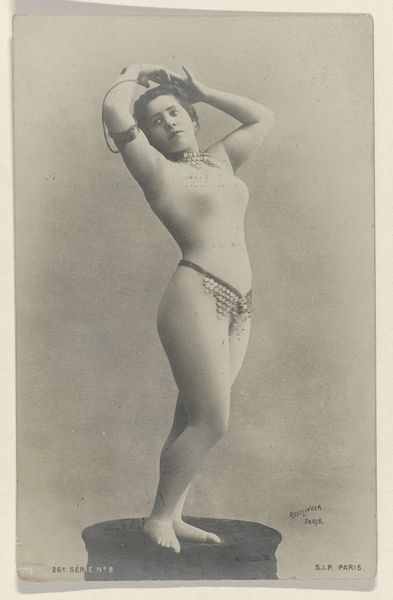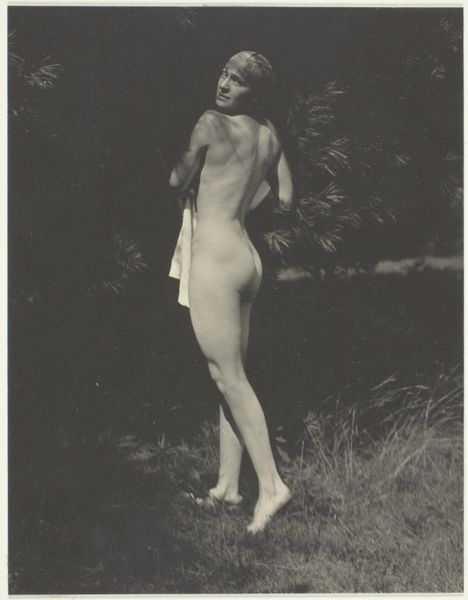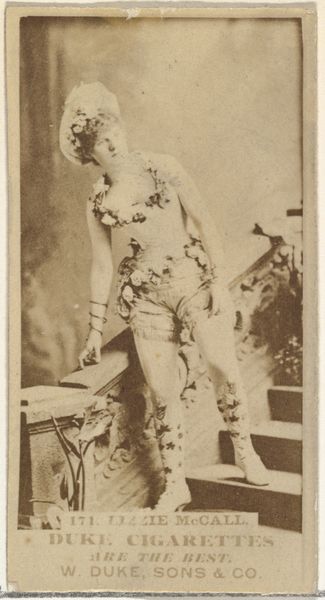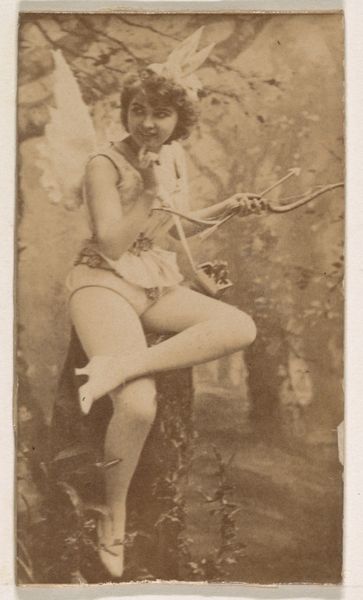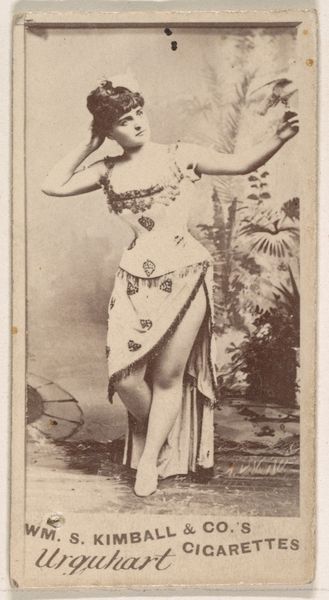
photography, gelatin-silver-print
#
portrait
#
pictorialism
#
photography
#
gelatin-silver-print
#
nude
#
erotic-art
Dimensions: height 221 mm, width 165 mm
Copyright: Rijks Museum: Open Domain
Editor: This is "Naakte jongen met luipaardvel," or "Naked Boy with Leopard Skin," a gelatin-silver print from somewhere between 1890 and 1900 by Guglielmo von Plüschow. There's an intentional classicism here, with the figure posed against what looks like a classical ruin. How do you interpret this work in the context of late 19th-century art? Curator: It's crucial to acknowledge Plüschow's work within the evolving social and legal contexts of photography. Pictorialism sought to elevate photography to the level of fine art. Photography offered a democratizing potential but also faced censorship. The erotic male nude, especially those circulating outside established academic or artistic institutions, immediately intersects with legal, moral, and, crucially, market forces. What institutions, do you think, might have deemed this image acceptable, and which would have condemned it? Editor: I imagine that private collectors or niche galleries focusing on classical themes might have considered this art. But a mainstream public museum? Maybe not. Curator: Exactly. The photographic societies played a crucial gatekeeping role, influencing what was shown and valued. Further, you should think about the implicit politics of eroticism; what kind of relationship is assumed between the photographer and his male model here? Editor: That's definitely something to consider; is he trying to represent power dynamics in the pose and setting itself? Curator: Precisely! And beyond the visual aesthetics, how do you think the distribution of these images contributed to the social construction of masculinity and desire during this time? The seemingly simple photograph, like Plüschow's, thus holds within it the tensions between artistic expression, social norms, and evolving power structures. Editor: I never really thought of how images themselves contributed to those structures. This really changes my view! Curator: Indeed. By questioning whose gaze is being catered to and what cultural narratives are being reinforced or challenged, we gain a deeper understanding.
Comments
No comments
Be the first to comment and join the conversation on the ultimate creative platform.
